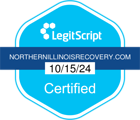The new year is around the corner, making now the perfect time to think beyond the usual nonsensical resolutions and focus on something that truly matters: your mental health. We all know how easy it is to set goals like working out more or eating better (which we usually stick to for a total of three days before reverting to form), but what about prioritizing your emotional well-being? Crafting mental health resolutions now is a powerful way to start the year with intention and clarity.
Starting early gives you the chance to properly think about what you want to change and how to make it happen sustainably. Whether it’s learning to set boundaries, practicing mindfulness, or simply taking time for self-care, building a blueprint for better mental health goes beyond quick fixes and into creating lasting habits. So, as you plan for the year ahead, why not make mental health a top priority? You deserve to feel good in your headspace, and starting now is the best way to set yourself up for success.

What Are Mental Health Goals?
Mental health goals are like personal checkpoints to help you feel more grounded, balanced, and in control of your life. They’re there to improve how you think, feel, and handle what life throws at you. These goals can be big or small, but the idea is to focus on things that support your emotional and mental well-being.
Setting mental health goals doesn’t mean having everything figured out. Rather, it’s more about taking small steps toward feeling your best. And remember, progress is progress, no matter how slow it feels.
The Difference Between Resolutions And Intentions
Resolutions and intentions might sound like the same thing, but they’re different down on the base level. Resolutions are more like specific, concrete goals – things you want to accomplish or change. They’re often about hitting milestones, like “I’m going to the track three times a week” or “I’ll stop procrastinating and start doing.” They’re all about achieving something measurable.
Intentions are more about the vibe you want to bring into your life. Instead of focusing on an outcome, they’re about how you want to feel or show up every day. For example, an intention could be “I want to be less judgemental of myself” or “I want to live more mindfully.” They’re less rigid and more about creating a mindset or energy that guides you.
How To Set Mental Health Goals
Setting mental health goals is all about creating realistic and meaningful ways to take care of your mind and emotions. Instead of focusing on being perfect, you figure out what you need to feel more balanced and in control. Here’s how to get started:
- Figure out what you need: Start by asking yourself what areas of your mental health you want to improve. Do you want to handle stress better? Boost your confidence? Feel more present? Knowing your focus makes setting goals easier.
- Keep it specific: A vague goal like “I want to be less bothered” is hard to work with. Instead, try something clear like “I’ll practice meditation for five minutes when I feel overwhelmed.”
- Make it realistic: Set goals that feel achievable for you. If you’re super busy, maybe your goal is just five minutes of mindfulness a day instead of an hour-long meditation session. Small steps still make a difference.
- Track your progress: Use a journal, an app, or even a quick mental check-in to keep track of how you’re doing. Noticing your progress, even if it’s slow, can keep you motivated.
- Be flexible: Life happens, and it’s okay if you need to tweak your goals along the way. What matters is that you’re still trying to prioritize your mental health.
- Celebrate your wins: Every step forward counts, so give yourself credit for the effort you’re putting in. Whether it’s a reward or just some self-love, acknowledge your progress.
Examples Of Mental Health Goals
Mental health goals can be very personal, but they all have the same purpose: helping you feel more balanced, grounded, and in control of your life. If you’re looking for inspiration, here are a few examples:
Habit-oriented goals are all about building small, consistent actions that eventually become second nature. They’re less about achieving a specific milestone and more about creating routines that make your life better in the long run. Here are some habit-oriented goals to inspire you:
- Start your day with gratitude: Write down one thing you’re thankful for each morning to set a positive tone for the day.
- Move your body daily: Whether it’s a workout, a walk, or even dancing in your room, aim to move for at least 20 minutes every day.
- Drink more water: Carry a water bottle and make it a habit to stay hydrated throughout the day.
- Unplug before bed. Set a goal to turn off your screens at least 30 minutes before bedtime to help you sleep better.
- Practice mindfulness: Spend 5 minutes daily meditating, doing deep breathing exercises, or simply being present.
- Read a little every day: Even if it’s just 10 pages, make reading a daily habit to relax and learn something new.
- Limit social media: Decide on specific times to check your apps instead of mindlessly scrolling all day.
- Stick to a bedtime: Create a consistent sleep schedule to help your body and mind recharge.
- Organize your space: Spend 5–10 minutes tidying up daily to keep your environment stress-free.
- Check-in with yourself: Take a moment at the end of each day to reflect on how you’re feeling and what went well.
Mission-oriented goals are all about the bigger picture. They’re tied to your purpose or the impact you want to make, whether it’s in your personal life, your community, or the world. These goals give you direction and a sense of meaning as you work toward something that matters to you. Here are some examples to get you started:
- Build a stronger support system: Make it your mission to nurture meaningful relationships by reaching out to friends, family, or mentors regularly.
- Advocate for mental health: Raise awareness by sharing your story, starting a support group, or volunteering with organizations that promote mental well-being.
- Create a positive online presence: Use your social media to spread uplifting content, support others, or share knowledge about topics you care about.
- Prioritize personal growth: Commit to becoming your best self by setting a mission to learn new skills, overcome fears, or work on areas of your life that need attention.
- Help others feel seen and valued: Make it a goal to actively listen, compliment people, or show kindness in everyday interactions.
- Give back to your community: Volunteer, fundraise, or start a project that addresses a cause you’re passionate about, like helping the environment or supporting underprivileged groups.
- Develop a healthier lifestyle: Focus on creating routines that support long-term health, like cooking balanced meals, exercising regularly, and managing stress.
- Build financial independence: Set a mission to save money, budget better, or work toward a career that aligns with your passions and provides stability.
- Be more eco-friendly: Reduce your carbon footprint by adopting sustainable habits like recycling, using less plastic, or supporting green initiatives.
- Spread positivity in your circle: Make it your goal to encourage and uplift the people around you, whether it’s through words, actions, or just being there when they need you.

Creating a Supportive Environment for Your Mental Health Goals
Creating a supportive environment for your mental health goals means setting yourself up for success by surrounding yourself with positivity and the right resources. Sticking to your goals is easier when your environment encourages your growth. Here’s how to get started:
- Surround yourself with positive people: The people you spend time with play a huge role in your mental health. These relationships will keep you motivated and remind you that you’re not alone in your journey.
- Declutter your space: A clean and well-organized space can elevate your mental clarity.
- Set up reminders: Whether it’s sticky notes with positive affirmations, a vision board, or setting up reminders on your phone, these little prompts can keep you on track.
- Create a routine: Having a set routine helps you incorporate mental health habits more easily into your day.
- Limit negative influences: Cut out or limit things that drain your energy, like toxic relationships, constant negative news, or social media accounts that make you feel bad.
- Make self-care accessible: Keep self-care items like calming teas, journals, or stress-relief tools within reach.
- Build a support system: Don’t hesitate to ask for help when you need it.
- Set boundaries: Make sure your environment respects your need for mental space. Creating physical and emotional boundaries helps protect your mental health.
- Celebrate progress: Surround yourself with reminders of everything you’ve achieved.
Northern Illinois Recovery is Your Gateway to Better Mental Health
If you’re looking for a fresh start when it comes to your mental health, Northern Illinois Recovery could be the perfect place to begin your journey. We provide a safe space to heal, grow, and learn how to navigate life’s challenges. Whether you’re struggling with anxiety or depression, or just need someone to talk to, Northern Illinois Recovery is there to guide you through it every step of the way.
With a range of services designed to help you build better coping skills, strengthen your mental resilience, and work through personal struggles, we have created an environment where you’re encouraged to focus on your well-being in a supportive, non-judgmental setting. We understand that mental health is personal, and we offer customized care to meet your unique needs. If you’re ready to take control of your mental health, contact us today and let us be your gateway to lasting change and a healthier, more balanced life.



